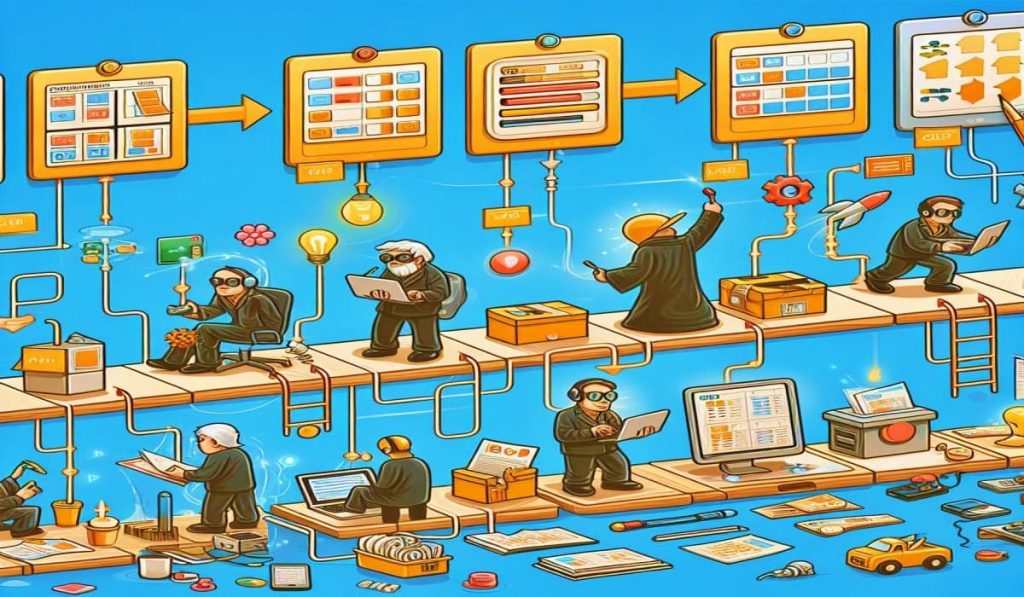Let’s say you have a project to complete. It can be a simple Social Science project for school or a massive one encapsulating the manufacture of a crucial aircraft component. How do you plan the project, from start to finish? What is the smartest way to execute it?
Project management is a wondrous part of work you can’t ignore, whether you run a single-person operation or a large corporation. Have you heard of Waterfall, Agile, Scrum, Kanban, or Six Sigma? These approaches are tried and tested methodologies for a smoother project workflow.
Kanban: From Then to Now (And the Future)
Today, we’re talking about Kanban. More specifically, we’re discussing how this approach began and how it grew into the giant it is today. At the end of this piece, you’ll realize that Kanban isn’t merely a buzzword. It changes the way you play the game of getting work done.
The Birth
As you can probably tell from its name, Kanban started in Japan. The word “Kanban” implies a “visual card” or a “signboard” of sorts. In the 1940s, a team at Toyota developed Kanban as a project management approach. At this time, the company saw a dire need for better productivity and efficiency as the country was clawing out of the war. Toyota needed to fix overproduction and inventory excess.
What was Kanban’s primary goal at this point, you ask? It aimed to develop a production system that catered to customer demand. Initially used for inventory and production management (in the form of physical cards), Kanban was a simple yet revolutionary concept. It maximized the use of visual cues for task tracking, making it easier for teams to work through various production stages.
Things Go Digital
As the world went digital, so did Kanban. Project management was smoother and faster when done on a computer. Therefore, Kanban saw an abandonment of sticky notes and a move towards digital platforms. Its simplicity didn’t go away, though. The idea of a visual representation remained, and users of digital Kanban boards could still create, organize, and track their work intuitively.
Kanban + Agile
Familiar with Agile? It’s popular in project management circles thanks to its iterative and flexible nature. Managers love it because it prioritizes collaboration and adaptability to change throughout the project’s execution.
Kanban software was fantastic on its own, but it blew up when combined with Agile principles. At this point, teams enjoyed greater flexibility and adaptability. They enjoyed a more complex view of workflows, allowing them to better prioritize tasks and manage work in progress.
Kanban + Lean
Now, how about Lean principles? Lean is all about reducing waste and maximizing value at the same time. Therefore, its meeting with Kanban was a match made in heaven. Let’s use the example of software development here. With Kanban and Lean, programming teams could improve their processes. They did that by identifying bottlenecks and making sure every step of the workflow mattered. All in all, they became more efficient.
Adding Complex Functionality
The need for sophisticated project management features has grown massively since Kanban went digital. People are asking for more, and rightly so.
Today, they want a way to track time, analyze workflows, collaborate with other parties, and integrate their boards with other software. These capabilities are part and parcel of many modern Kanban boards. They are the reason that large projects see smooth executions from start to finish. Furthermore, they bring better future results thanks to data-driven insights.
Looking Ahead
What does the future hold for Kanban boards? It certainly looks bright. Tomorrow’s Kanban tool will be even more indispensable. It will use artificial intelligence and machine learning to help teams evolve and grow. Projects will see shorter execution timelines as data analytics advance. Furthermore, teams and organizations will enjoy more success in their projects with seamless integration with emerging technologies.
Kanban: Simple, Powerful, and Versatile
Yes, we have the engineers at Toyota to thank for Kanban. They saw the beauty in a simple Kanban tool that could revolutionize the way the company produced cars. Since its inception in the 1940s, however, Kanban has grown massively.
Despite its growth, Kanban’s underlying concept has never left the building. You can still operate a project using Kanban methodology with a whiteboard and sticky notes. However, why limit yourself? Today’s world is nothing like it was 80 years ago. The digital revolution has made work easier, faster, and more purposeful. How lucky are we to be in the presence of great Kanban boards such as Teamhood? Let’s celebrate that!
RELATED TOPICS
- Top Software Development Outsourcing Trends
- The Role of Software Escrow in Mitigating Business Risks
- Benefits of CI/CD for Your Software Development Company
- AI Assistant Evolution: Breakthroughs in Software Development
- Exploring Software Categories: From Basics to Specialized Apps
- Top Benefits of Using Flutter for Cross-Platform App Development










